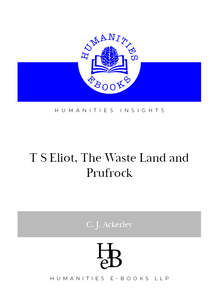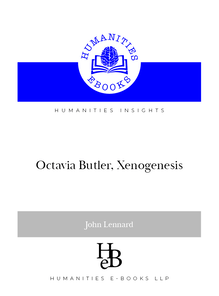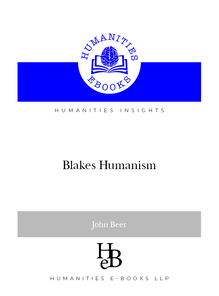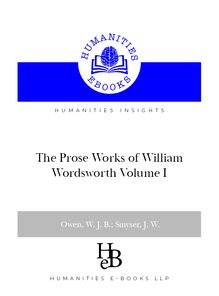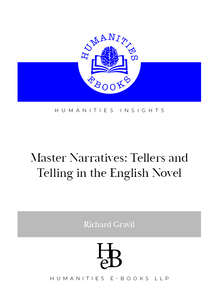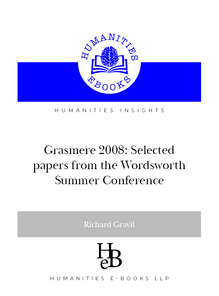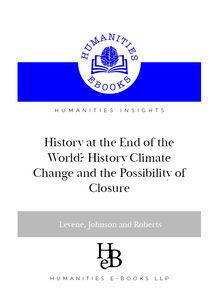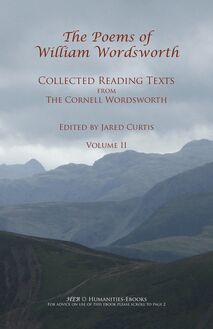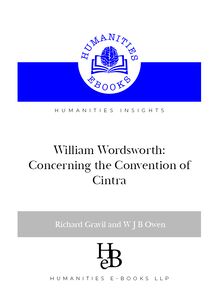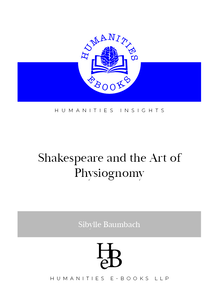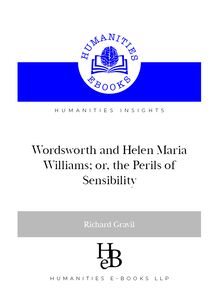-
 Univers
Univers
-
 Ebooks
Ebooks
-
 Livres audio
Livres audio
-
 Presse
Presse
-
 Podcasts
Podcasts
-
 BD
BD
-
 Documents
Documents
-
- Cours
- Révisions
- Ressources pédagogiques
- Sciences de l’éducation
- Manuels scolaires
- Langues
- Travaux de classe
- Annales de BEP
- Etudes supérieures
- Maternelle et primaire
- Fiches de lecture
- Orientation scolaire
- Méthodologie
- Corrigés de devoir
- Annales d’examens et concours
- Annales du bac
- Annales du brevet
- Rapports de stage
La lecture à portée de main
239 pages
English
Découvre YouScribe en t'inscrivant gratuitement
Je m'inscrisDécouvre YouScribe en t'inscrivant gratuitement
Je m'inscris
Obtenez un accès à la bibliothèque pour le consulter en ligne
En savoir plus
En savoir plus
239 pages
English
Obtenez un accès à la bibliothèque pour le consulter en ligne
En savoir plus
En savoir plus

Description
An illustrated study of the social, political and literary thought underlying Blake's Songs and the Prophetic Books, culminating in Milton.
Sujets
Informations
| Publié par | Humanities eBooks |
| Date de parution | 11 janvier 2021 |
| Nombre de lectures | 0 |
| EAN13 | 9781847600004 |
| Langue | English |
| Poids de l'ouvrage | 3 Mo |
Informations légales : prix de location à la page 0,0498€. Cette information est donnée uniquement à titre indicatif conformément à la législation en vigueur.
Extrait
John Beer
Blake’s Humanism
HEB☼HumanitiesEbooks
Publication Data
© John Beer, 1968, 2007 The author has asserted his right to be identiîed as the Author of this Work in accordance with the Copyright, Designs and Patents Act 1988
First published in 1968 by Manchester University Press Published electronically in 2007 byHumanities-Ebooks.co.uk Tirril Hall, Tirril, Penrith CA10 2JE
Reading Options
*To use the navigation tools, the search facility, and other features of the Adobe toolbar, this Ebook should be read in default view. *To navigate through the contents use the hyperlinked ‘Bookmarks’ at the left of the screen. *To search, expand the search column at the right of the screen or click on the binocular symbol in the toolbar. *For ease of reading, use <CTRL+L> to enlarge the page to full screen [use <Esc> to return to the full menu]. *The Plates on pages 223-235 may be previewed by choosing ‘Pages’ at the left of the screen.
Licence
By purchasing this book you have been granted the right to read this work on-screen. No part of this publication may be otherwise reproduced or trans-mitted or distributed without the prior written permission of both the copyright owner and the publisher. Making or distributing copies of this book consti-tutes copyright infringement and would be liable to prosecution. Thank you for respecting the rights of the author.
It is permissible to print a copy of the book for your own use.
ISBN 978-1-84760-000-4
‘William Blake in Youth and Age’ (by George Richmond after Frederick Tatham) Yale Center for British Art,Paul Mellon Collection
Blake’s Humanism
John Beer
Humanities Ebooks
© John Beer, 1968, 2007
The author has asserted his right to be identiIed as the Author of this Work in accordance with the Copyright, Designs and Patents Act 1988
First published in 1968 by Manchester University Press
2nd edition published electronically in 2007 byHumanities-Ebooks.co.uk Tirril Hall, Tirril, Penrith CA10 2JE
Contents
1 Blake and his Readers 2 A Fourfold Vision 3 The Energies of Desire 4 The Lion and the Rose 5 The Genius of Revolution 6 The Descending Vision 7 All Things Humanized 8 Unwanted ProsperoAppendix One: The Development of Blake's Mythology Appendix Two:The Gates of ParadiseThe Illustrations: A Commentary List of Illustrations and Hyperlinks
7
Preface
Those who now study the work of William Blake find their path eased by the wealth of scholarship which has preceded them. In the last few years, particularly, the devoted work of scholars such as Sir Geoffrey Keynes, G. E. Bentley, Junior, and David Erdman has made Blake’s text universally accessible—down to the last thumb-nail scoring by a passage in Swedenborg which impressed him. The visual art is still not as generally available as one could wish, but here the Trianon Press editions mark a great step forward; through the labours of Geoffrey Keynes and others, moreover, most of the paintings and drawings are now published somewhere. In detailed interpretations of the work of Blake I have been particularly helped by the studies of S. F. Damon, Northrop Frye and David Erdman. There are few books which do not add to the corpus of knowledge about his work, however, and to acknowledge specific debts is not always easy. Interpretations which seemed unlikely when first read may become, in a fuller context, thoroughly acceptable—by which time one may have forgotten where one first came across them. If due acknowledgment has been omitted anywhere, I ask to be pardoned. Among writers on Blake, Kathleen Raine should be particularly mentioned. Her work had not at the time of writing been published in its final form, but I have been able to follow its progress in published articles and also to watch it unfolding in various lectures which I was privileged to attend. Although my own view of Blake differs from hers in certain important respects her work has been a constant stimulus, without which my own would have suffered. The studies by Harold Bloom and Desirée Hirst were published when my work was largely completed, but enabled me to mention some points which I found particularly valuable. It is one of the delights of studying Blake that those who have gained most from him are often to be found a long way from the universities. Some of the most enlightening commentary, for example, is to be found indirectly in the creative work of writers who have learned from him—writers as diverse as W. B. Yeats, E. M. Forster, D. H. Lawrence, Saul Bellow and Kathleen Raine herself. I remember with pleasure conversations with enthusiasts such as Frank Freeman, Judith Law, William Hughes and the late Alfred Winter. I am particularly grateful for the help and encouragement of my wife, who was reproved by her grandfather for reading Blake at the age of seven and has been enjoying him ever since.
The studyon which this book is based was first begun towards the end of mytenure of a Research Fellowship at St John’s College, Cambridge. My thanks are due to the
8
College not only for that Fellowshipfor but providingwith rooms and dinners for a me few months after its expiryin May1958, thus enablingme to survive as a scholar at a crucial time. The Universityof Manchester, under the auspices of which the majorpart of the work was done, has always been extremelygenerous in allowingfor time research andgrants for travel, besides providing the opportunity for discussions with colleagues such as Professor Frank Kermode, Professor John Jump and Dr Arnold Goldman, and for seminars which enabled various theories to begiven an airing. A room for research wasprovided bymunificence of Manchester Central Librar the y, where the use of a study carrel for severalyears enabled work on this and other projects togo forward. Myparticular thanks are due to the Librarians and staff of that library for their unfailing courtesy and efficiency, and to the staffs of the John Rylands Library; the Manchester University Library; the Pierpont Morgan Library; the Harvard UniversityLibrary; the FoggMuseum; The Cambridge UniversityLibrary; the Fitzwilliam Museum; the Victoria and Albert Museum; and the ReadingRoom, Students’ Room and Print Room of the British Museum. Nor should I forget the efficiency of the Lost PropertyDepartment of British Railways, which rescued an earlydraft of the manuscript after it had been thrown off a train in which I was travellingbyan over-zealousporter at Stafford. Sir Geoffrey Keynes, Mr Martin Butlin of the Tate Gallery, Mr Malcolm Cormack and Mr E. C. Chamberlain of the Fitzwilliam Museum and Mr David Erdman of the New York Public Libraryall responded with kindness and alacrit have y to myrequests for help onparticularpoints. Mydebt of final gratitude is to the Master and Fellows of Peterhouse, where this book has been finallyprepared forpublication and where I have been enabled, after severalyears, to bring together my teaching and research into oneplace again.
J. B. B.
Cambridge 1967
9
A Note on Texts and Blake’s Punctuation
The text of this book has been corrected generally to accord with that ofThe Poetry and Prose of William Blake, edited by David V. Erdman, commentary by Harold Bloom, New York, 1965 (E). Blake’s own punctuation, used here, is eccentric—it often indicates emphasis rather than connection, for example—but it is not perverse and the real obscurities in the text are not elucidated by making it orthodox. Since English readers are more likely to have access to the Nonesuch editions of Blake, edited by Geoffrey Keynes, nevertheless, references are also given in the notes to the Nonesuch edition of 1939 (NB) and to the Nonesuch Variorum edition of 1958 (NC). The original Nonesuch edition of 1927 (NA) has a different pagination from either of these editions; a conversion table from NB to NA is furnished by A. S. Roe in Blake’sIllustrations to the Divine Comedy, Princeton, 1953. The reader who wishes to consult a text with Blake’s own ‘illuminations’ should, ideally, have access to the facsimile editions published by the Trianon Press. Failing this, the most compendious edition of the illuminated books is still (surprisingly) the 1 third volume of Blake’sWorks, edited by E. J. Ellis and W. B. Yeats, London, 1893.
1 Since these words were first published, Oxford University Press has publishedThe Illuminated Blake, edited and annotated by the late David Erdman (1975), which meets this need better
1 Blake and his Readers
When generalizations are made about art or poetry William Blake is one of the first exceptions who has to be accounted for: the necessary adjustment is usually made either by calling him a ‘genius’ (with the suggestion that this compensates for certain disadvantages) or by referring to him as ‘mad’ (with an indulgent inflection of the voice to allow for admiration of his achievements). He has always been an odd man out, the joker in our neatly sorted eighteenth-century pack. To write connectedly and at length about such a figure might seem to be attempting the impossible. It is not just that he refuses to reduce to our categories, escaping like quicksilver from our carefully wrought patterns of organization. With Blake, there is a further disturbing fact. His words sometimes improve when taken out of context. I behold London; a Human awful wonder of God! Such a line takes on new virtue when read in isolation from the page on which it 1 occurs —it is as though the very space around the line gives the words greater resonance. The final truth about Blake does not rest there, however. He had no desire to go down to history as a writer of inspired fragments—on the contrary, he wanted to produce work on the grand scale, to write an epic poem: and the effects of his desire are inevitably a part of his presented work. We must study the total context of that work if we want to see it as anything more than an obscure landscape lighted by periodic flashes; and we must sometimes do this in order to get the full effect of the ‘flashes’ themselves. The sort of positive qualities which Blake possessed automatically involved a certain relationship with the art, the literature and the society of his time: even his antagonisms and defensive gestures give his art some of its essential character. Once we look into that relationship, moreover, we find ourselves involved with the widest issues. Blake was one of those men who, by standing at an angle to his age, causes us to look at it, as a whole, with new eyes. Its artistic, social and religious presuppositions are both challenged and thrown into relief. We may begin with the question of genius and madness. The idea that there is a
1 Jerusalem, 38(34). 29. NB 480; NC 665; E 178.
-
 Univers
Univers
-
 Ebooks
Ebooks
-
 Livres audio
Livres audio
-
 Presse
Presse
-
 Podcasts
Podcasts
-
 BD
BD
-
 Documents
Documents
-
Jeunesse
-
Littérature
-
Ressources professionnelles
-
Santé et bien-être
-
Savoirs
-
Education
-
Loisirs et hobbies
-
Art, musique et cinéma
-
Actualité et débat de société
-
Jeunesse
-
Littérature
-
Ressources professionnelles
-
Santé et bien-être
-
Savoirs
-
Education
-
Loisirs et hobbies
-
Art, musique et cinéma
-
Actualité et débat de société
-
Actualités
-
Lifestyle
-
Presse jeunesse
-
Presse professionnelle
-
Pratique
-
Presse sportive
-
Presse internationale
-
Culture & Médias
-
Action et Aventures
-
Science-fiction et Fantasy
-
Société
-
Jeunesse
-
Littérature
-
Ressources professionnelles
-
Santé et bien-être
-
Savoirs
-
Education
-
Loisirs et hobbies
-
Art, musique et cinéma
-
Actualité et débat de société
- Cours
- Révisions
- Ressources pédagogiques
- Sciences de l’éducation
- Manuels scolaires
- Langues
- Travaux de classe
- Annales de BEP
- Etudes supérieures
- Maternelle et primaire
- Fiches de lecture
- Orientation scolaire
- Méthodologie
- Corrigés de devoir
- Annales d’examens et concours
- Annales du bac
- Annales du brevet
- Rapports de stage
Signaler un problème
YouScribe
Le catalogue
Le service
© 2010-2024 YouScribe
